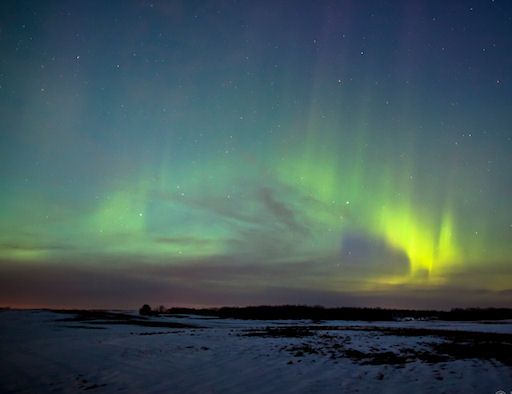What's up in space? SOLAR FLARES - LYRID METEOR SHOWER & more...
LYRID METEOR SHOWER: Earth is entering a stream of debris from Comet Thatcher, source of the annual Lyrid meteor shower. Forecasters expect the shower to peak on Friday morning, April 22nd, with as many as 20 meteors per hour. Unfortunately, bright moonlight will interfere with the display. [full story] [live meteor counts]
IN MEMORY OF TOM CARR: Today's edition of spaceweather.com is dedicated to Prof. Thomas D. Carr, who died on April 19th at the age of 94. A noted space scientist specializing in radio emissions from planets, Dr. Carr mentored generations of graduate and undergraduate students at the University of Florida, including the author of this website (image). Tom was classic, an old-school astronomer capable of building his own radio telescopes from scratch and operating those telescopes with rare skill. Indeed, he was busy building Yagis and studying radio lasers in Jupiter's magnetosphere until weeks before his death. His passing marks the end of an era.
AURORA WATCH: A slow-moving CME could hit Earth's magnetic field during the late hours of April 21st, sparking a new round of high-latitude auroras. NOAA forecasters estimate a 30% chance of geomagnetic activity. Aurora alerts: voice,text.
On April 20th, photographer Zoltan Kenwell witnessed the effects of the solar wind over the Alberta prairies:
"With the moon at 90%, it was a very bright night, but the aurora borealis was even brighter," says Kenwell. "Most of the snow on the Alberta prairies around St. Paul has finally melted. There is a lot of standing water to reflect the glow of the heavens."
SOLAR FLARES: Emerging sunspot complex 1195-1196 is crackling with C-flares. John Stetson and students in South Portland, Maine, caught one of them, a C4-class eruption, today at 1500 UT:
"Big sunspot 1193 was an attractive target," says Stetson, "but the real action was taking place around the sun's southeastern limb." Indeed, that is where readers withsolar telescopes should point their optics. AR1195-1196 is growing in complexity and more flares could be in tthe offing.
More images: from Cai-Uso Wohler of Bispingen, Germany; from Adrian Maricic of Auchterderran, Fife, Scotland; from Bernd Flach-Wilken of Wirges, Gemany; from Gianluca Valentini of Rimini, Italy
Provided by Space Weather News

